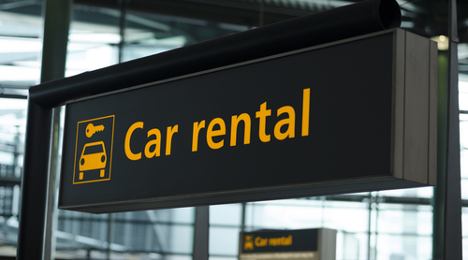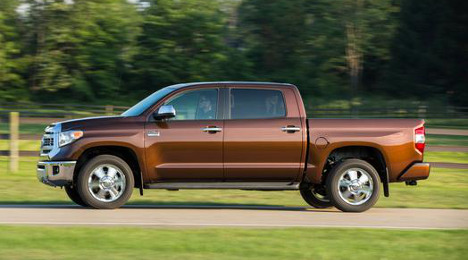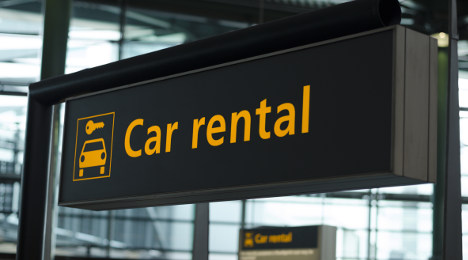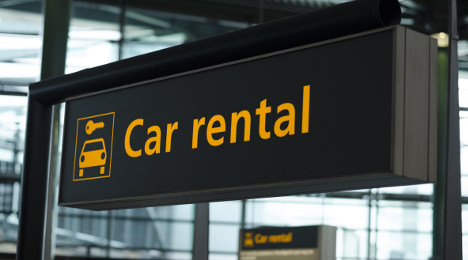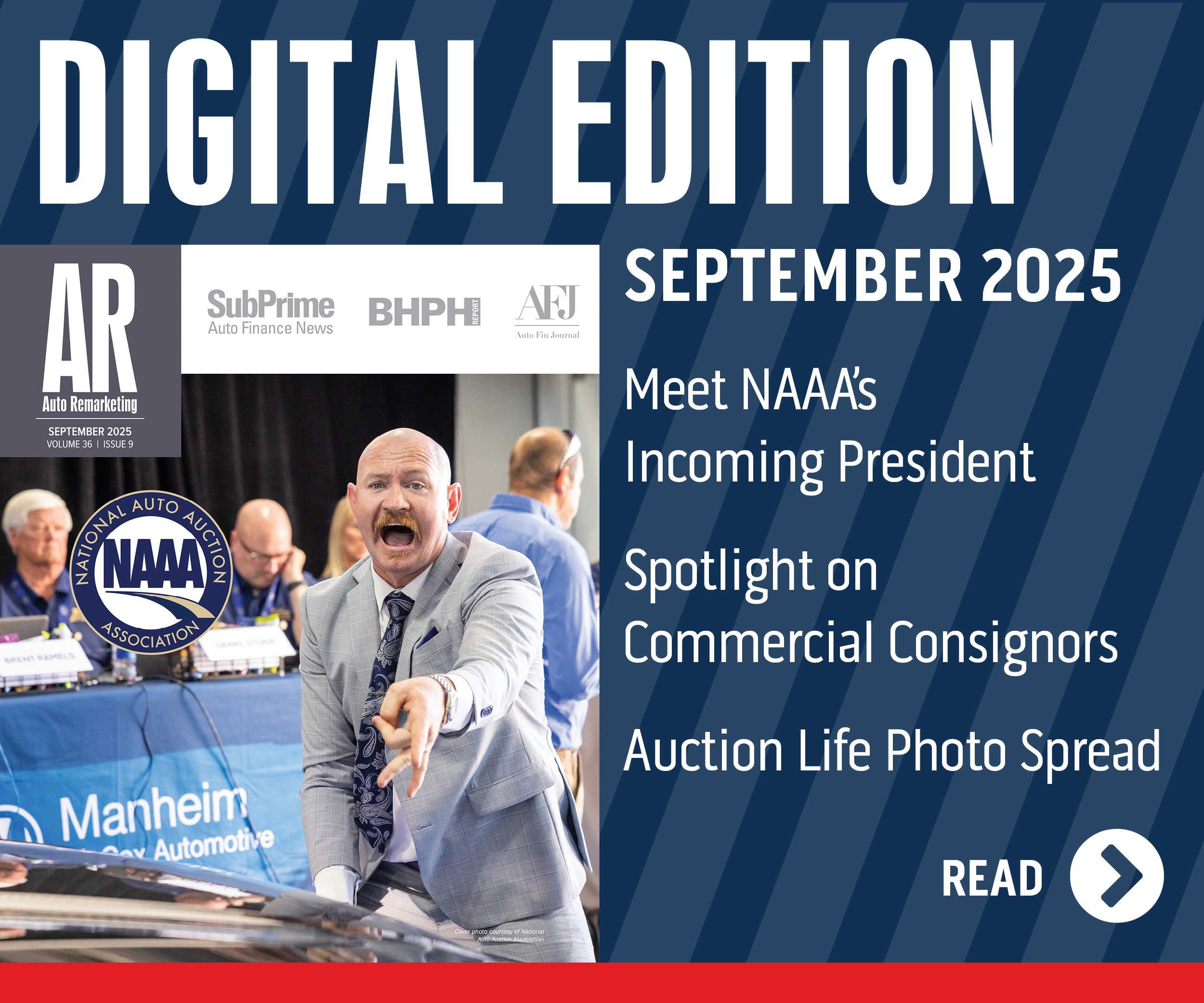Advantage Rent A Car announced today it has completed its acquisition of E-Z Rent-A-Car.
Now joined, the company features a combined network of 85 locations with a presence at 22 of the top-25 airports in the United States.
“We can now see even more benefits to our ‘one company, two brand’ approach than originally envisioned,” said Bill Plamondon, Advantage’s president. “The combination will allow greater efficiencies and economies of scale in areas such as fleet, maintenance, back office processing and procurement.”
The combined company will be led by experienced managers, including the founders of E-Z Rent-A-Car, Mehrdad Memarpouri and Hesam Sahraian, as well as Advantage’s William Plamondon and Scott Lieberman, alongside Gabriel de Alba, the managing director and partner of The Catalyst Capital Group.
“This combination is exactly what we strive for in an investment,” de Alba said. “Delivery of a solution to the regulators, high barriers to entry, valuable underlying assets, proven established brands, a seasoned management team and the economies of scale of a major player that is positioned to grow its market share.”
Hertz Global Holdings plans to cut down on its purchases of new model-year 2015 units this year, while also selling more units out of its existing pool of cars.
The company, sharing these plans in a recap of its first quarter operating results released last week, said these steps are part of its effort to reach its targeted supply growth for the year.
Per this plan, Hertz increased the amount of used cars it disposed of during Q1 by 43 percent year-over-year.
Sixty-seven percent were sold through what Hertz defines as “alternative distribution channels.” These are the non-auction sales channels like retail sales and Hertz Dealer Direct, a company spokesperson explained. The other third were sold through auctions.
There was actually a fairly large uptick in the number of units Hertz sold at auction during Q1; however, the growth in the alternative distribution channels was higher, the spokesperson said.
Rental Risk in April
As he usually does, Manheim chief economist looked at one particular slice of this market — remarketing of rental risk units — in his latest analysis accompanying the Manheim Used Vehicle Value Index report.
The report dives into a few different metrics impacting the overall wholesale market during April.
“Auction prices for rental risk units sold in April fell more than 4 percent on both a mix-adjusted and straight-average basis. That comparison, however, was against last year’s record high,” Webb said in the analysis.
“Auction volumes for rental risk units continued to rise significantly in April. This was reflective of the 11.9-percent increase in new unit sales into rental during the first four months of 2015,” he continued. “Conversion rates were better than average, and average mileage, at more than 46,600 miles, was high.”
Elsewhere, as part of his quarterly presentation last month recapping Q1 trends, Webb offered a breakdown of how rich the vehicle diversity is becoming in the rental-risk unit channel.
In the first quarter of 2013, Manheim determined there were 2,598 unique year, make, model, body configurations remarketed by the wholesale industry. This past quarter, the figure jumped to 3,623.
Furthermore, Webb mentioned the number of unique year, make, model, body configurations it took to reach 50 percent share of the rental-risk volume rose from 57 in Q1 of 2013 to 88 in Q1 of this year.
“It’s a good opportunity for dealers to acquire nice inventory,” Webb said of used-car managers hunting the off-rental lanes. “The shift away from having the rental fleets composed of vehicles that were stripped down in terms of options is something that really ended a long time ago.” Staff Writer Nick Zulovich contributed to this report.
To help explain how residual values are behaving, Manheim Consulting regularly shares a graph showcasing the Manheim Used Vehicle Value Index versus mix and quality adjusted New Vehicle Price Index computed by the U.S. Bureau of Labor Statistics (BLS).
Manheim chief economist Tom Webb said that the visual aid should show a general upward drift for residual values because, “If you assume that we don’t go back to some of those bad practices of the past, then I think the percentage level of around 47 percent is not unusual.”
The two specific bad practices Webb mentioned during his quarterly conference call earlier this week included automakers pushing thousands of new vehicles into rental fleets only to have them show up in the auction lanes less than six months later. He also touched on OEMs slapping thousands of incentives dollar on the hood in order for franchised dealers to turn that new metal.
Webb was then asked how the industry can keep residual values on that upward drift even while wholesale prices are softening at least moderately from some of the peaks seen about two years ago along with new-vehicle leasing penetration staying near 30 percent currently and for the foreseeable future.
“I’m hopeful (new-vehicle leasing) continues to go up just because it’s a better practice for the industry. I think it’s better for the customer in many instances as opposed to being in those long-term loans, which I do think have the potential for causing some customer dissatisfaction at some point,” Webb said.
Webb then pointed out that a higher lease penetration rate should not “in and of itself” impact residual values.
“As a matter of fact, if leasing is done right, it should protect residual values. It should not reduce it,” he said. “The problem is, as you well know, because there are economic cycles your peak originations are going to occur at the top of the economic cycle and your peak off-lease volumes may very well occur at the trough. That’s the risk that you take as a lessor.
“But to the extent that we have more stable new-vehicle sales cycles, they’re mitigating some of that risk also,” Webb went on to say.
Diversity in the Rental Lanes
In another part of his quarterly presentation, Webb offered a breakdown of how rich the vehicle diversity is becoming in the rental-risk unit channel.
In the first quarter of 2013, Manheim determined there were 2,598 unique year, make, model, body configurations remarketed by the wholesale industry. This past quarter, the figure jumped to 3,623.
Furthermore, Webb mentioned the number of unique year, make, model, body configurations it took to reach 50 percent share of the rental-risk volume rose from 57 in Q1 of 2013 to 88 in Q1 of this year.
“It’s a good opportunity for dealers to acquire nice inventory,” Webb said of used-car managers hunting the off-rental lanes. “The shift away from having the rental fleets composed of vehicles that were stripped down in terms of options is something that really ended a long time ago.
“What that particular chart shows is more the diversity of the mix in terms of makes and models out there as opposed to being concentrated in what you might term, ‘the rental vehicle’ that we had in the past,” he continued. “There are a lot of different makes and models.”
To illustrate his point further, Webb touched on three specific vehicle categories dealers can find in off-rental lanes that might not have been so prominent in the past.
“Certainly in recent years, the rental car companies have done quite well with some of the smaller crossovers in their rental fleets because customers like them to rent and they also had good residuals when they came back,” Webb said. “Right now, some of the luxury high-end SUVs coming out of the rental fleets are also commanding good prices as are minivans.
“Of course, you have your bread and butter midsize cars, which are still the bulk of the rental fleet. But you still have a lot of different makes models and styles,” he added.
Another Thought on Dealer Profits
An earlier report from Auto Remarketing detailed why Webb contends retail demand is the primary driver as to why wholesale prices haven’t soften more. Webb further quantified his assessment by sharing a figure — 99.9 percent — especially if used-car managers are still frustrated by what they’re paying on the block to fill inventory.
“I would say that with 99.9 percent of these purchases (dealers) end up making a profit on the subsequent retail sale so they can continue to bid up,” Webb said.
“I would also think — but it might be harder to quantify — to the extent that dealers have increased their efficiencies and turn rates and they still have great F&I opportunities, that allows them to bid because to a certain extent there’s less of a risk premium in terms of what the pricing is. Certainly if they’re turning the unit quickly, they’re confident of that gross they’re going to achieve,” he went on to say.
Southeast Toyota Distributors announced this week that five dealers in its region have been honored with the 2014 National Leadership Award for outstanding performance in the Toyota Rent a Car program.
A total of 56 dealers, overall, received the TRAC award. The Southeast Toyota dealers winning the award were:
Toyota of South Dade – Homestead, Fla.
Headquarter Toyota – Miami, Fla.
Arlington Toyota – Jacksonville, Fla.
Thomasville Toyota – Thomasville, Ga.
Scott Clark Toyota – Charlotte, N.C.
The program determines winners through a point-based criterion emphasizing such factors as training, fleet size and marketing.
“The Toyota Rent a Car National Leadership Award truly recognizes the best of the best dealers for our franchise,” said Tom DeLuise, TCUV and TRAC national manager. “These dealers have demonstrated their commitment to customer satisfaction and understand the importance of customer retention.
“Toyota would like to thank this Elite group of dealers that continue to help us grow our Rent a Car business and have emerged as our leaders as we move into the future,” he added.
Southeast Toyota plans to recognize the five award winners from its region with a personalized crystal award during a ceremony.
The Toyota.com/rental website will identify each store as a TRAC National Leadership Award recipient, as well. Additionally, each store’s TRAC manager and a guest receive an invite to a Toyota‐hosted appreciation award trip.
“We support 176 dealerships in the five-state region, representing 20 percent of the nation’s market share, and they all contribute to that success by maintaining Toyota’s highest standards of excellence,” said Ed Sheehy, president of Southeast Toyota Distributors. “We are especially honored to congratulate these five award recipients who have joined an elite group of Toyota dealers nationwide.
“They truly understand the importance of providing an exceptional customer experience and know the value in offering services like TRAC to promote brand loyalty.”
Last fall, Southeast Toyota hosted a media event in the Charlotte, N.C. suburbs to introduce the 2015 Toyota Camry. While there, Auto Remarketing talked with Southeast Toyota sales training manager Darlene Morgan about why hands-on training is so beneficial for those dealers.
The complete list of 2014 TRAC National Leadership Award winners is below
Mossy Toyota in San Diego
Toyota of San Bernardino in San Bernardino, Calif.
Hooman Toyota of Long Beach in Long Beach, Calif.
Toyota Carlsbad in Carlsbad, Calif.
Toyota of Escondido in Escondido, Calif.
Freeman Toyota in Santa Rosa, Calif.
Toyota of Walnut Creek in Walnut Creek, Calif.
Piercey Toyota in Milpitas, Calif.
Roseville Toyota in Roseville, Calif.
Elk Grove Toyota in Elk Grove, Calif.
Beaverton Toyota-Scion in Beaverton, Ore.
Toyota of Bozeman in Bozeman, Mont.
Clint Newell Toyota in Roseburg, Ore.
Rodland Toyota in Everett Wash.
Heartland Toyota in Bremerton, Wash.
Dolan Toyota Scion in Reno, Nev.
Larry H. Miller Toyota Peoria in Peoria, Ariz.
Camelback Toyota in Phoenix
Alexander Toyota in Yuma, Ariz.
Beaver Toyota of Santa Fe in Santa Fe, N.M.
Toyota of Stamford in Stamford, Conn.
Liberty Toyota in Burlington, N.J.
Westbury Toyota in Westbury, N.Y.
Interstate Toyota in Airmont, N.Y.
Lia Toyota of Colonie in Schenectady, N.Y.
Prime Toyota in Saco, Maine
Down East Toyota in Brewer, Maine
Expressway Toyota in Dorchester, Mass.
Smart Toyota in Madison, Wisc.
Schaumburg Toyota in Schaumburg, Ill.
Toyota of Naperville in Naperville, Ill.
Continental Toyota in Hodgkins, Ill. IL
Don Jacobs Toyota in Milwaukee
Sunnyside Toyota in North Olmsted, Ohio
Toyota Knoxville in Knoxville, Tenn.
Toyota of Murfreesboro in Murfreesboro, Tenn.
Kerry Toyota in Florence, Ky.
Chuck Hutton Toyota in Memphis, Tenn.
Toyota of Cool Springs in Franklin, Tenn.
Reliable Toyota in Springfield, Mo.
Headquarter Toyota in Hialeah, Fla.
Thomasville Toyota in Thomasville, Ga.
Scott Clark's Toyota City/Scion in Stallings, N.C.
South Dade Toyota in Homestead, Fla.
Arlington Toyota in Jacksonville, Fla.
Classic Toyota in Tyler, Texas
John O'Neil Johnson Toyota in Meridian, Miss.
Price LeBlanc Toyota in Baton Rouge, La.
Fowler Toyota of Tulsa in Tulsa, Okla.
Orr Toyota in Dallas
Bennett Toyota in Allentown, Pa.
Team Toyota of Glen Mills in Glen Mills, Pa.
Checkered Flag Toyota in Virginia Beach, Va.
Conicelli Toyota in Conshohocken, Pa.
Team Toyota in Langhorne, Pa.
Koons Tysons Toyota in Vienna, Va.
Wholesale prices last month softened 0.3 percent from January, but still beat year-ago levels by more than 3 percent. The reason, says ADESA’s Tom Kontos, has a lot to do with the supply of off-rental program/factory vehicles.
Specifically, the latest Kontos Kommentary report put out by ADESA Analytical Services indicates that the average wholesale price in February was $10,176. This was off 0.3 percent month-over-month but represents a 3.4-percent upswing from February 2014.
Kontos said the increase was “primarily due to a ‘richer mix’ that includes a higher proportion and quantity of off-rental program/factory units.”
Adding some more context to that, he noted in the report: “As in January, much of the positive year-over-year price variance is driven by higher off-rental program/factory vehicle sales.
“Program vehicles are typically current-model-year or one-year-old models that sell for higher average prices than other auction sales types.”
Enterprise Holdings has expanded its rental portfolio, announcing Friday morning that it has acquired Triangle Rent A Car.
The purchase of the Raleigh, N.C.-based company includes the Triangle brand, locations, websites and a majority of its fleet, including its van and truck rental business.
The 29 branch offices that Triangle Rent A Car has throughout Georgia, North Carolina, South Carolina and Virginia are immediately transitioning to one of the Enterprise Holdings’ brand locations.
Enterprise says it is aiming to retain the roughly 300 full- and part-time employees of Triangle.
“Triangle Rent A Car’s reputation for taking excellent care of its customers closely aligns with Enterprise’s commitment to superior customer service,” said Brice Adamson, senior vice president at Enterprise Holdings. “This acquisition is an opportunity to provide even better service to our customers in the Southeast, where the demand for reliable, cost-effective transportation solutions continues to grow.”
“As family-owned companies, Enterprise Holdings and Triangle Rent A Car share many of the same values, including our customer service philosophies,” said Frank Colonna, president of Triangle Rent A Car. “Given Enterprise’s vast resources and strong focus on putting the customer first, I’m confident that our loyal customers, employees and business partners are in good hands with Enterprise.”
Roughly two-and-a-half months after it was announced that chairman and chief executive officer Mark Frissora resigned from the position for personal reasons, Hertz Global Holdings will have a new president and CEO effective Friday.
Appointed to the post and to the company’s board of directors is John Tague, who was most recently chairman and CEO of transport and logistics provider Cardinal Logistics Holdings. Among other roles in the travel industry, Tague’s experience has included serving as president and chief operating officer of United Airlines.
The Hertz board’s CEO Search Committee led the search process.
Linda Fayne Levinson, the independent non-executive chair of the Hertz board, said: “John is a leader whose record shows a relentless focus on execution and high performance, having driven the successful turnaround of other large, complex consumer facing companies such as United Airlines. The board was very clear about what we needed in a new CEO for Hertz.
“We were looking for a world class global leader who knows the travel industry and its players, has an intimate understanding of the revenue optimization equation, drives operational excellence, has driven turnarounds, is a superb people leader, and most of all, understands how to create shareholder value. In John we have found that leader,” Levinson said.
On that committee are five independent directors, two of which were appointed recently under an agreement with Carl Icahn. The committee was assisted by an executive search firm.
Icahn said: “My team and I, along with Linda Fayne Levinson and other members of the Hertz Search Committee, spent a significant amount of time with a number of highly qualified candidates. The Committee performed an extensive search for the CEO position before the Committee and the Board unanimously selected John Tague as the next CEO of Hertz. I have been involved in a number of CEO searches during the last decade and have been quite impressed by the knowledge and imagination of a number of these candidates, many of whom have turned into very successful CEOs.
“I am happy to say that after listening to John's ideas concerning Hertz and evaluating what he has accomplished at United, I believe he ranks at or near the top of the group. Importantly, Glenn Tilton, the former Chairman and CEO of United Airlines, informed me that John Tague was a key player in the United Airlines turnaround, and as president and the former COO, he would have been Glenn's recommendation to be the next CEO of United once Glenn retired, had the United / Continental merger not occurred.”
Tague added: “I am honored to have been selected to lead Hertz to its full potential at a time of unprecedented opportunity for the Company and industry. I look forward to partnering with Hertz employees as we work to earn sustained industry leadership for the benefit of our shareholders, customers and team.”
When news of Frissora stepping down was announced back in early September, it was also revealed that the board of directors had appointed Brian MacDonald, the president and CEO of Hertz Equipment Rental Corp., to serve as interim CEO.
“On behalf of the Hertz Board, we thank Brian MacDonald for his selflessness in stepping into the interim leadership role. Strategic actions he and the Hertz team have taken over the past months have enabled a smooth transition and put Hertz on stronger footing to address our challenges and achieve success,” Levinson said in Thursday’s announcement.
Not long after results shared by publicly traded dealer groups and investment analysts painted a clear picture of the second-quarter’s used-car market, industry observers began pinpointing a used-car sales total for July.
Starting with TrueCar, the company said Friday it anticipates that July will close with an estimated 3.31 million used sales, resulting in a new-to-used ratio of 1-to-2.3.
Meanwhile, the team at Edmunds.com is calling for approximately 3.22 million used-car sales for the month, resulting in a 36.2 million SAAR. In June, there were 2.94 million used sales with a SAAR of 36.7 million, Edmunds said in its analysis released Thursday.
CNW Research, which released its projections on Wednesday, was predicting that franchised dealers would sell 1.68 million used units in July, down 4.5 percent year-over-year, while independents were expected to move 1.47 million used cars (down 4.8 percent). Oddly enough, casual sales are likely to rise 10.6 percent and come in at 1.42 million.
All told, this would be 4.57 million used sales in July, down 0.4 percent year-over-year. CNW sheds a bit more light on why it is anticipating a softer month in this Auto Remarketing story.
As for the recently completed second quarter, KeyBanc Capital Markets found that stores generally saw used-sales volume climb. The majority of respondents in its June dealer survey — 64 percent, in fact — indicated a volume increase in the 0-to-10 percent range year-over-year.
However, the remaining 36 percent of dealer participants sustained year-over-year declines in used-sales volume of up to 5 percent.
“We believe retailers under our coverage will report largely at the high-end of this range driven by company specific actions such as competitive Internet tools, a wider range of inventory selection and multi-sourcing efforts,” KeyBanc analysts said.
Additional data points from the KeyBanc dealer survey can be found in this story from SubPrime Auto Finance News, Auto Remarketing's sister publication.
Editor's Note: Staff Writer Nick Zulovich contributed to this report.
With General Motors providing rental cars to the owners of vehicles affected by its recent ignition-switch recall actions, there are bound to be effects in the remarketing world.
Black Book editorial director Ricky Beggs talked to Auto Remarketing on Wednesday about how, exactly, those outcomes might surface in the auction lanes.
To meet the strong demand for these temporary replacements for GM recall-affected drivers as the recalled cars are being fixed, rental companies will have to keep units in stock that they would normally be remarketing this time of year, he explained.
Plus, one has to consider all the cars within the rental companies’ fleets that have to be fixed, themselves, before heading to the wholesale market.
In the short term, this reduction of rental supply will have some impact on the current wholesale price strength, in that it will “hold that up just a little longer than normal,” Beggs said.
Now, consider the other side of the equation. When all the recalled cars are fixed, and the rentals subsequently make their way into the wholesale lanes, Beggs says this doesn’t just add more supply. It also brings in units that are higher-mileage and a bit older than usual.
This will soften prices to some degree, he said, but it won’t be drastic.
Beggs sets it up like this. With the forecast for annual price depreciations being 13.5 percent, the even-line per-month depreciation would be a little more than 1 percent each month. (Granted, some months prices increase, and therefore, the price decrease would be stronger in other months).
He anticipates the fixes will be complete in about three or four months. So, instead of June and July having typical 1.1 percent to 1.2 percent depreciation, these months may see depreciation levels around 1.3 percent to 1.4 percent.
Beggs doesn’t anticipate an escalation to 1.5 percent to 1.7 percent, given that the rental car segment is just once piece of the used market.
He’s also quick to point out that these rental companies have “very sharp” remarketing professionals who will make smart decisions when it comes to wholesaling the cars. Rental companies will examine the various venues for remarketing, they’ll look at how many units they put out at any given time, and so forth.
Beggs says they won’t just “dump” all of their off-rental vehicles into the wholesale market all at once, but will do so gradually. And the mileage on these cars will likely be in the 28,000- to 32,000-mile ballpark (versus the typical 18,000 to 20,000 level), he explained.
This would be a far cry from the 48,000 to 50,000 miles that many off-rentals were showing back in 2010, when rental companies had to hold on to cars longer because they couldn’t secure replacement inventory, given the drooping new-car SAAR, Beggs noted.

